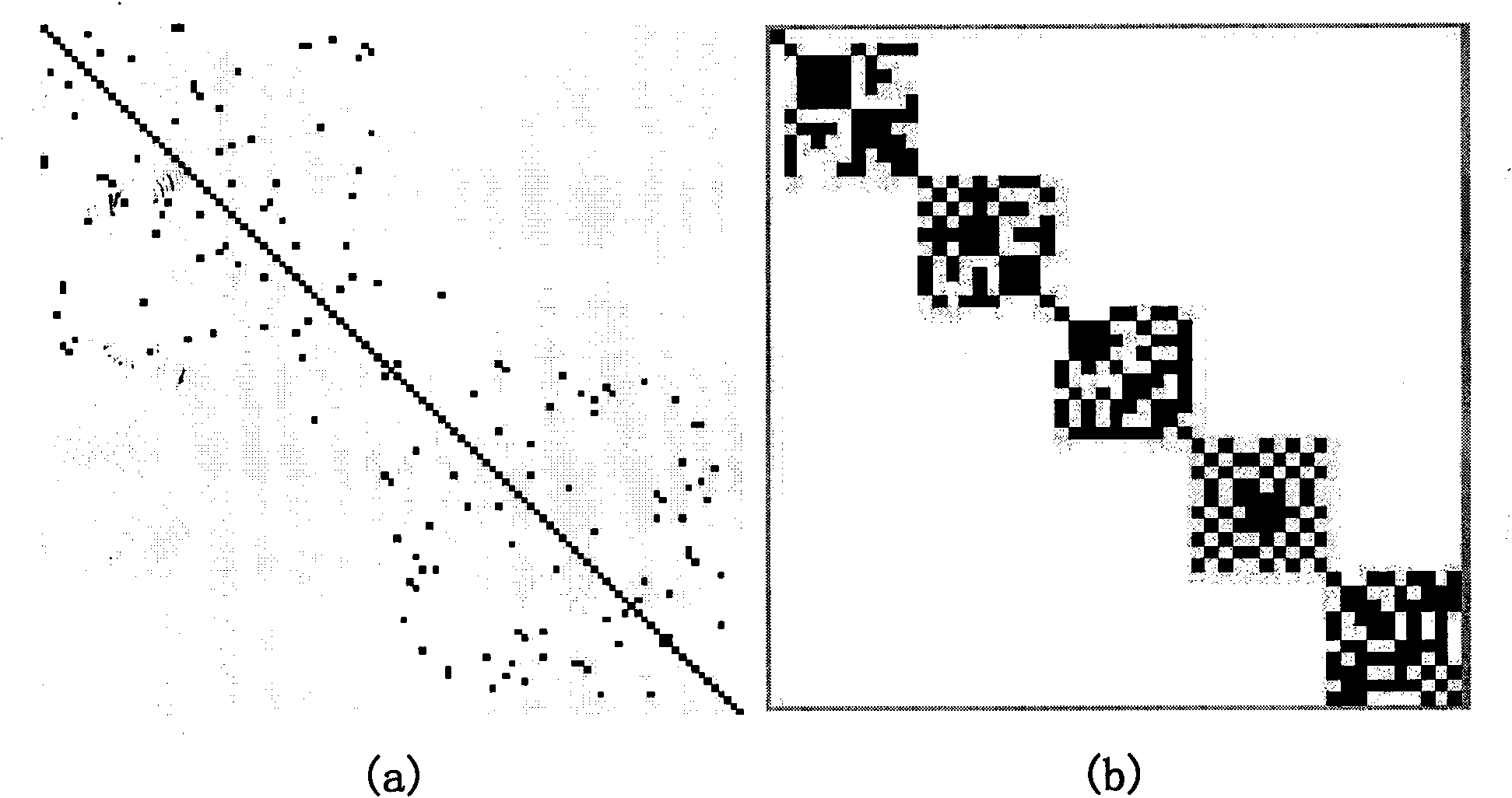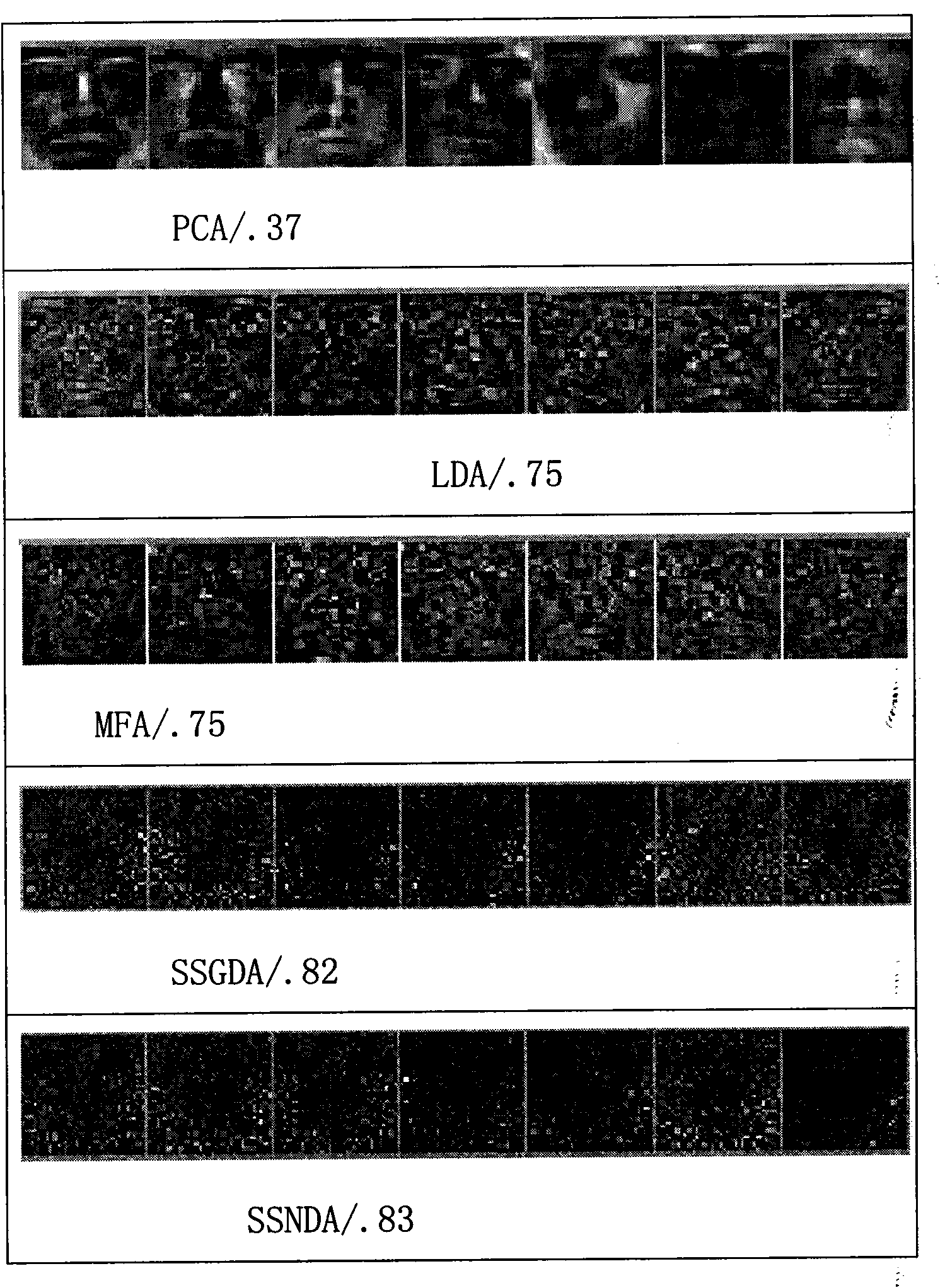Semi-supervised neighborhood discrimination analysis method for face recognition
A technology of discriminant analysis and face recognition, applied in the field of image processing, which can solve the problems of insufficient labeled data, money-consuming and time-consuming, etc.
- Summary
- Abstract
- Description
- Claims
- Application Information
AI Technical Summary
Problems solved by technology
Method used
Image
Examples
Embodiment Construction
[0021] The invention provides a semi-supervised neighborhood discriminant analysis (SSNDA) method for face recognition. Combine below Figure 1-7 and different algorithms, the present invention will be further described based on spectrogram theory.
[0022] Spectral graph theory for dimensionality reduction
[0023] In classification problems, the training sample set can be expressed as a matrix X=[x 1 , x 2 ,...,x N ], x i ∈R M , where N is the number of samples, M is the feature dimension, and x i is the jth face sample, x i ∈R M Indicates the face sample x i belongs to the M-dimensional real number space. In a supervised learning problem, a sample x i The class label of c i ∈{1,2,...,n c}, where n c is the number of classes, N j is the number of samples belonging to the jth class.
[0024] Construct an undirected weighted graph G={X, A} using the graph-based dimensionality reduction method [2,3], where the vertex set is X, and the adjacency matrix or weight ...
PUM
 Login to View More
Login to View More Abstract
Description
Claims
Application Information
 Login to View More
Login to View More - R&D
- Intellectual Property
- Life Sciences
- Materials
- Tech Scout
- Unparalleled Data Quality
- Higher Quality Content
- 60% Fewer Hallucinations
Browse by: Latest US Patents, China's latest patents, Technical Efficacy Thesaurus, Application Domain, Technology Topic, Popular Technical Reports.
© 2025 PatSnap. All rights reserved.Legal|Privacy policy|Modern Slavery Act Transparency Statement|Sitemap|About US| Contact US: help@patsnap.com



